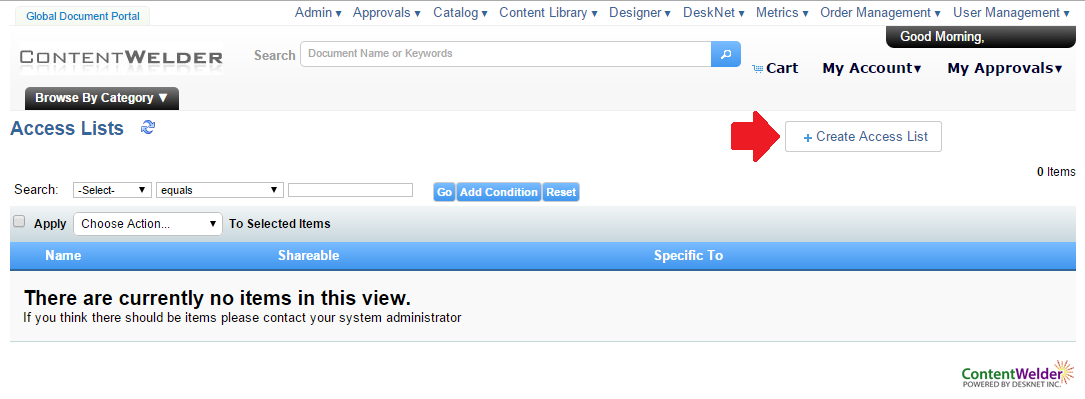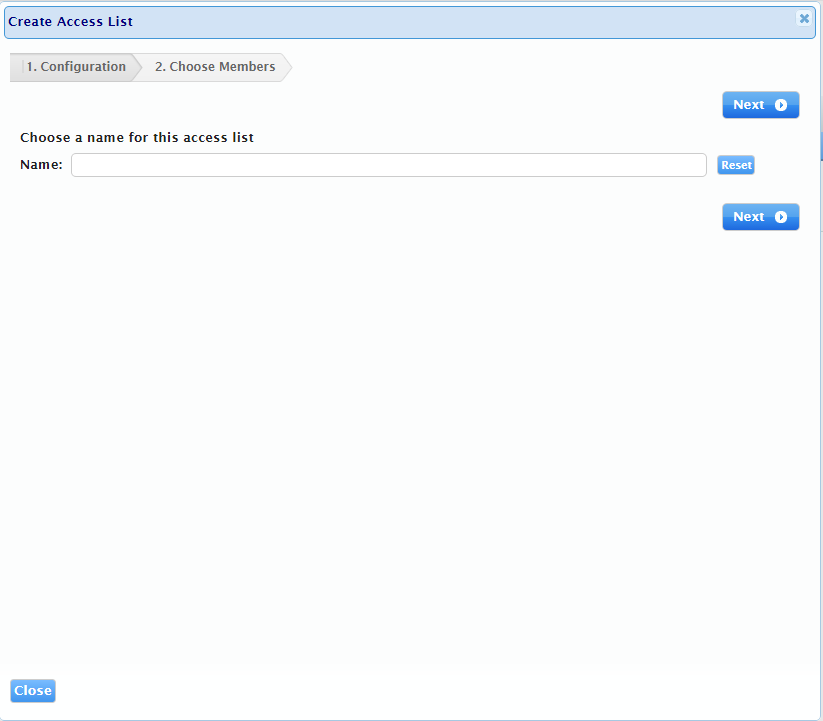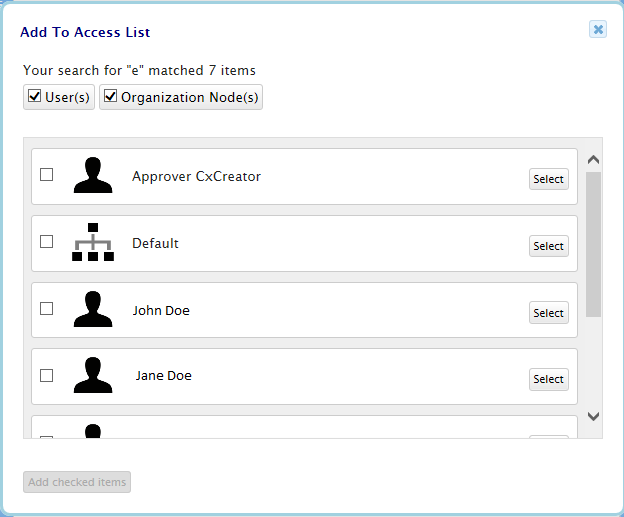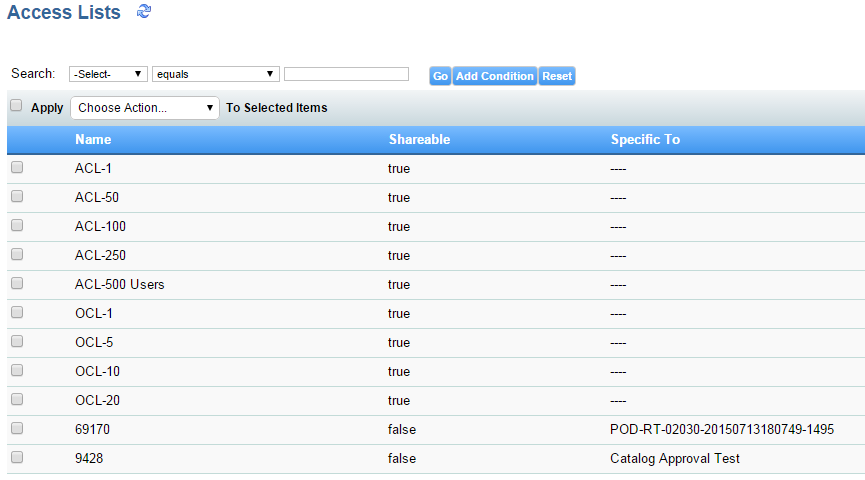Access Lists
Access lists allow you to define reusable groups of individuals and Organization Nodes for the purposes of restricting access to one or more items.
Items that have Access List assigned to them are only available to users that are defined in that access list.
Access Access Lists
Click on the Admin then Access Lists menu option.

Creating an Access List
- Navigate to the Access List view as shown in the screen shot above.
- Click "Create Access List" as highlighted by the arrow below.

- When creating a new access list, first you must specify the name of the Access List you want to create.
Best Practice Tip
It's recommended that your Access List name is somewhat representative of the business need you are trying to meet.
- Once you've entered your Access List Name, click "Next" to proceed to the next step.
- Here you will be presented with the following screen:

- Once you've entered your Access List Name, click "Next" to proceed.
- Here you will be presented with the following screen:

| Name | Description | |||||||
| 1 | Search Term |
Enter a search term to find users or Organization nodes By default the search will return both. If you want to specifically search for a user or an Organization Node, use the "search filter" |
||||||
| 2 | Search |
Click to initiate the search
Once you perform a search, If there is more than one matches for your search term, you will be presented with a dialog box to choose from the returned results as shown below. 
Toggling the check boxes will toggle the corresponding "Users / Organization Node".
Best Practice Tip for Searching If you’re organization has hundreds or thousands of Users / Organization Nodes, searching for a single character probably won't return the items you're searching for. So you should enter a complete word or a unique identifier. |
||||||
| 3 | Search Filter Term |
By default ContentWelder will search against both Users and Organization nodes If you know you're only searching for users, then choose the "users" from the drop down. Depending on your account setup, this may result in a faster search. |
||||||
| 4 | Assigned Users |
The list of users you've added to this Access List will be displayed here. Best Practice Tip: If you need to create a Access List that contain a large number of users (hundreds), it is recommended that you use an Organization Node instead. This way you only need to add one item instead of hundreds of users. Note: Important: Even if you have access to managing Access Lists. if you don't add yourself to an Access List, then assign an access list to an item (catalog item for example), you will not be able to see this item. since you are not part of the access list. |
||||||
| 5 | Assigned Organization Nodes | The list of Organization Nodes you've added to this Access List will be displayed here. | ||||||
| 6 | Previous | Click to go to the previous step. | ||||||
| 7 | Close |
Click to close the wizard. Note: Clicking Close button will NOT save changes that are incomplete. |
Once you have completed your Access List setup, it will appear in the Access List view. as shown in the "Sample Access List" below.

Best Practice Tip
It is recommended that you create access lists first, then assign them to various items. By doing so, you can centrally manage the access lists from one location rather than having to find all of the items that use this access list.
Shareable vs non-shareable access lists
As we see in the screen shot below, Access Lists are either reusable or they were created specifically for a single item.

Distinguishing between the types of access lists:
- Shareable Access Lists have the 'shareable' column value set to true. If the value is 'false' then the access list is not shareable.
- Non-shareable Access Lists have the name of the item the Access List is tied to displayed. In this case, these are both Catalog items.
Shareable Access Lists
Shareable access lists, like the one created in the steps above, are created with the intent of being reused for multiple different items.
Best Practice:
It is recommended to use shareable Access lists whenever possible. This make the job of maintaining these lists easier over time easier.
It's much easier to manage one access list that is assigned to 30 catalog items as opposed to managing 30 catalog items that each have an item specific Access List/
Item Specific Access Lists
There may be times where an item specific access list is better suited to your needs. You can see an example of this in Restricting Access to catalog items




